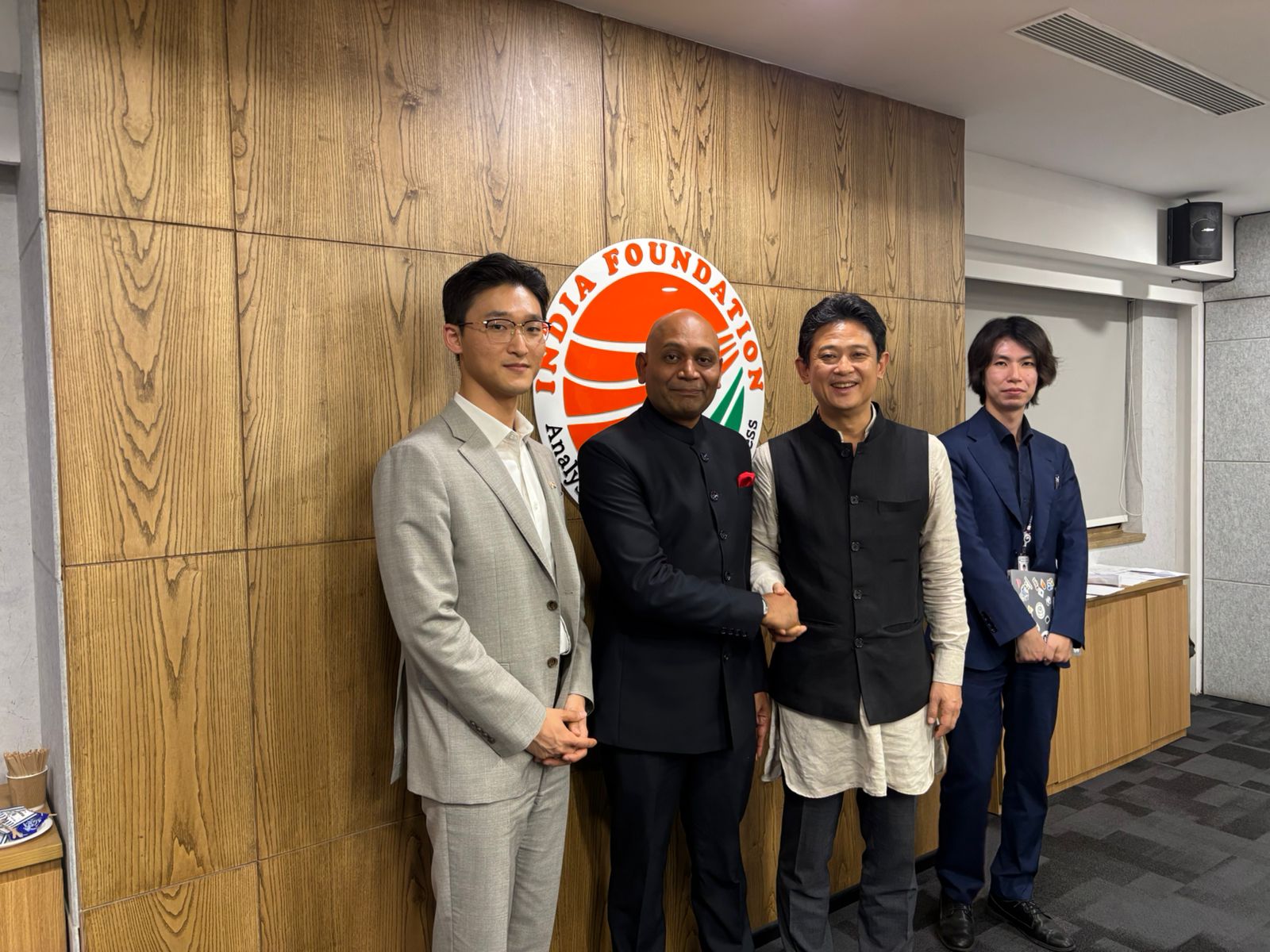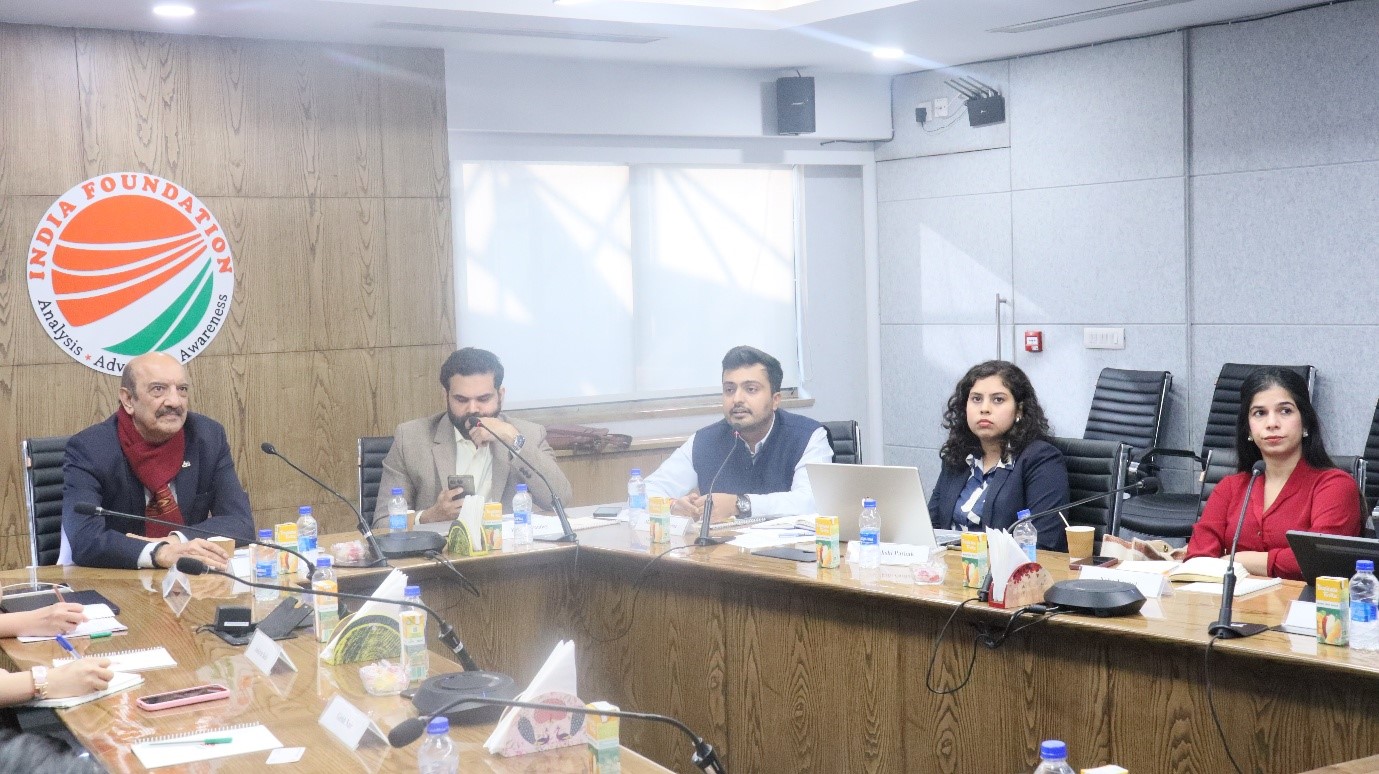On November 24, 2025, India Foundation hosted a civic honour for His Holiness Jagadguru Shankaracharya of Dakshinamnaya Sri Sharada Peetham, Sringeri Sri Sri Vidhushekhara Bharati Mahaswamiji at the Stein Auditorium of the India Habitat Centre, New Delhi. The spiritual address, delivered by His Holiness Mahaswamiji, was graced by the virtual presence of the Hon’ble Vice President of India, Shri C.P. Radhakrishnan. The welcome address was delivered by Dr. Ram Madhav, President, India Foundation. The event was moderated by Capt. (Retd.) Alok Bansal, Executive Vice President, India Foundation. It was attended by a range of dignitaries, including current and former diplomats, academics, corporate leaders, spiritual thinkers, and public intellectuals. The spiritual address
Addressing the assembly, the Hon’ble Vice President thanked His Holiness for his gracious presence and praised the efforts of the Sringeri mutt towards revitalising Sanatana Dharma. Underscoring the religious diversity and centrality of India’s civilisation as the birthplace of many religions, he praised His Holiness’ and the mutt’s efforts in fostering harmony, inclusivity, and training scholars.
Dr. Ram Madhav welcomed His Holiness, tracing the history of the Sringeri mutt, and Adi Shankaracharya’s efforts in establishing the four dhamas, each holding an indelible significance in Hindu society.

His Holiness Mahaswamiji commenced his address with ritual incantations. He narrated the journey of Sage Bhartrihari and his struggle in spreading knowledge of Dharma to effect social reform in the society, leading him to compose the Niti Shaktam, Vairagya Shaktam, and the Shringara Shaktam, inhering the principles of non-duality or Advaita.
Making this account his base, His Holiness explained that the essence of dharma needs to be reiterated in the age of technological progress which may have introduced new mediums of achieving happiness and well-being but has not reduced sorrow, or dukkha, which has acquired new manifestations. In effect, he argued, the concepts of sukha and dukha, are linked to the forces of dharma and adharma, respectively.
He remarked that human nature is governed by its desire to have the greatest happiness of the greatest number for the longest time; however, when kaarya/karma is divorced from righteousness, or dharma, and abhyasa, this goal remains elusive, causing sorrow. Actions undertaken in constant pursuit of righteousness and swadharma, he observed, pave the way for the realisation of moksha, or the ultimate salvation from worldly phenomena.
He praised members of the community committed to promoting dharma, the knowledge of the Vedas, Upanishads, and holy scriptures, and expressed optimism about the adherence of dharma in the society.
The note of thanks was delivered by Shri K. Srinivas, President, India Habitat Centre. The spiritual address concluded by His Holiness blessing the audience.












































